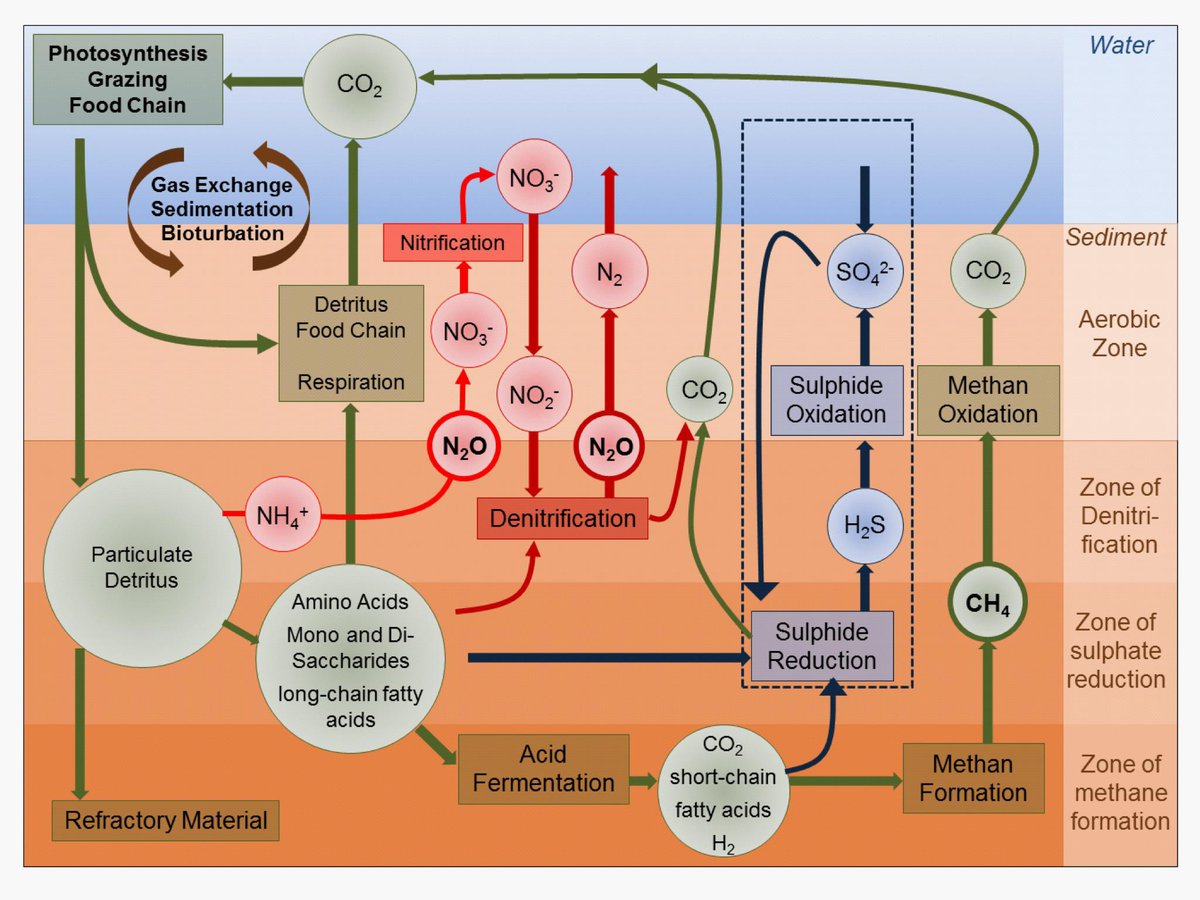G2: Climate relevant trace gases in shallow waters impacted by terrestrial nutrient input from a coastal peatland
supervised by Voss, Jurasinski, Rehder

Focus
Quantification of trace gases in coastal waters in relation to other environmental parameters like temperature and substrate concentration. A major method will involve measurement of stable isotope signatures in nitrate, inorganic carbon and methane to narrow the potential pathways of production of these trace gases. Together with the trace gas data from Topic G3 the overall relevance of such sites and their potential to produce climate relevant gases will be estimated.
State of the Art
Trace gases like nitrous oxide and methane heavily impact the climate system of the earth, yet their sources are not fully understood. Especially important for the production of trace gases are microbial processes which can produce nitrous oxide depending on environmental settings like nutrient concentrations in coastal runoff and/or submarine groundwater discharge (SGD). Changes in methane concentrations from the coast towards the open sea are also expected and depend on the exchange between sediments, water, and atmosphere. In sediments microbial activities like nitrification and denitrification can produce significant amounts of nitrous oxide. Permeable sediments are supposed to be especially active sites of microbial turnover since wave action and turbulence enhance the transport of substances through the porewaters. Therefore, it is important to evaluate the nutrient turnover and nutrient removal in the coastal system along with the trace gas emissions. Moreover, nutrient emissions from land – when supplied in high ratios of nitrogen to phosphorous concentrations – have the potential to shift the microbial processes from nitrogen removal processes towards enhanced nitrogen turnover with concomitant release of nitrous oxide. In these cases, the coastal areas would no longer be important buffer strips against nitrogen input to the open sea but rather sources of additional nitrogen. Off the nature reserve „Heiligensee und Hütelmoor“ - a well-studied peatland complex near Rostock – coastal sediments are permeable and receive input of nutrients and organic material also through SGD. They are thus expected to be highly active sites for microbial processes and trace gas emissions.
Work program
Measurements of trace gases like nitrous oxide and methane will be done as well as abiotic parameters and nutrient concentrations in coastal waters. The signals of natural abundances of stable isotopes in particulate and dissolved substances (e.g. δ15N and δ18O in NO3-, δ13C in DIC) shall be used to identify processes and their relevance for trace gas production, but also to reveal which sources provide nitrogenous compounds in the coastal waters. The necessary methods are fully implemented in the working groups of the supervisors of this project.
